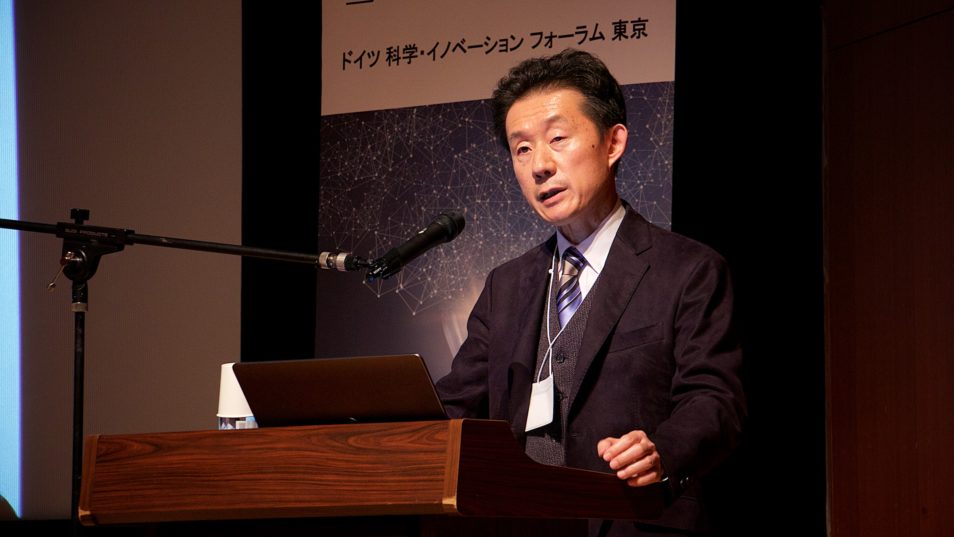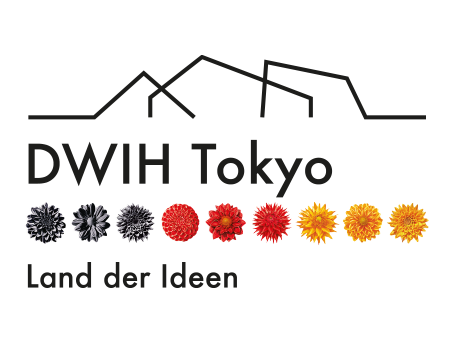AI and Healthcare: Big data aided observation and AI aided interpretation will overcome human recognition limits
 © DWIH Tokyo
© DWIH Tokyo
Dr. Kazuhiro Sakurada, Deputy Program Director at RIKEN Medical Sciences Innovation Hub, chaired sessions on AI and Healthcare during a Japanese-German-French AI symposium in November 2018 (symposium report) and a follow-up trilateral forum on AI and Healthcare in December 2019 (forum website). In this interview he shares his findings from discussions with experts from Japan, Germany and France.
DWIH Tokyo (Q1): In the role of the Chair you facilitated forum sessions on “Quality Standards for AI in Healthcare” and “Joint Database for Medical Data”. How would you summarise your findings based on the panel discussion with experts from Japan, Germany and France? What was new for you?
Dr. Sakurada: The global environment is fast moving toward digital transformation (digitisation). Artificial intelligence (AI), machine learning (ML) and Deep Learning (DL) will play important roles in data driven innovation. However, without the balance between data protection and data driven innovation, personal data will be misused. All of the three countries acknowledge the importance of personal data protection and data driven innovation. This will make it possible to develop a common policy and platform for data driven medical innovation.
DWIH Tokyo (Q2): Linked to your session topics where do you see joint challenges for Japan, Germany and France and what fields did you identify for potential collaboration in a trilateral setting – may it be small or big scale.
Dr. Sakurada: To realize data driven innovation, four platforms are required. (1) Measurement platform for physical conditions, (2) Multimodal data integration and sharing platform, (3) Data interpretation platform, (4) Dependability platform. Each platform requires global harmonization by considering technical aspects and ethical, legal and social aspects.
Industry will benefit by harmonized regulation of a measurement platform, data sharing / platform integration and dependability platform. Science communities of our three countries can push forward AI aided biomedical sciences by developing new data interpretation technologies.
In the next step, a workshop that can discuss concrete proposals on trilateral collaboration by gathering a wide range of stakeholders will be effective to initiate collaborative actions.
DWIH Tokyo (Q3): What did you and your co-chair learn from each other during the preparations for the two events and the sessions that you chaired together?
Dr. Sakurada: For a long time, mechanism and statistical truth have been implemented in quality standard processes of healthcare. AI application in healthcare is making significant changes in these processes. Without quality standards for AI applications, AI aided medical data driven services will not be implemented. Therefore the two sessions – “Quality standards for AI Applications in Healthcare” and “Joint Database on Medical Data” – are interrelated.
The content of my co-chair’s session covered a wide range of topics that provided me a comprehensive understanding of challenges in quality standardization.
DWIH Tokyo (Q4): What would be your appeal to fellow speakers and the experts in the forum audience?
Dr. Sakurada: As a biomedical scientist, I feel that our understanding of organism and human being is still limited. Big data aided observation and AI aided interpretation will overcome human recognition limits. Similarly, sensor technologies and AI in healthcare are in the early stages. Over promise of big data and AI driven innovation can lead to misinterpretation of disease and health. France, Germany and Japan share the common value of human rights and can contributed in developing cutting edge technologies in this field. I wish that our three countries can start collaborative actions to develop new data driven platforms in medical services that can improve human health and well-being.
Further documentation material on the “Japanese-German-French Forum on AI and Healthcare”:
- Report about the forum
- Interview with the Chair of the session “Quality Standards for AI in Healthcare”, Prof. Dr. Klaus Juffernbruch
- Photo gallery of the conference (©DWIH Tokyo)
- Video (livestream) of the forum
